

Reflecting on 100 years: The enduring legacy of the Georgetown Boys’ arrival
As we mark the centennial anniversary of the Georgetown Boys’ arrival in Canada, we are reminded of the profound impact of Canada’s Noble Experiment—a beacon of compassion that illuminated the darkest corners of history. In a world marred by conflict and intolerance, the story of these Armenian orphans is a testament to the resilience of the human spirit and the power of empathy.
Canada’s first international humanitarian act was sparked by the Armenian Genocide— an atrocity that saw the lives of 1.5 million Armenians extinguished and countless families torn apart. Amid this horror, a group of Canadians, touched by the plight of these victims, rallied to create a lifeline. The result was the arrival of a group of orphans in Georgetown, Ontario.
The journey of the Georgetown Boys mirrors a broader narrative of hope and renewal. These boys, torn from their homeland and orphaned by tragedy, found solace in the welcoming arms of a new land. Through perseverance, they learned new skills and forged their destinies as proud Canadians and proud Armenians, embodying the spirit of resilience.
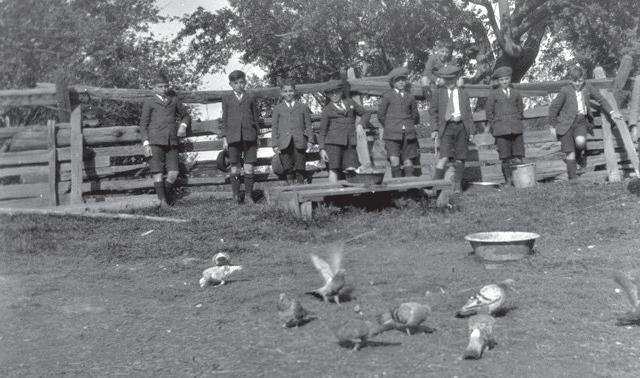
This centennial anniversary serves as a reminder that amidst the darkest times, humanity can shine its brightest. The legacy
of the Georgetown Boys is imprinted not only in the fields of Georgetown but also in the hearts of their descendants and the broader Armenian-Canadian community. Their story is a beacon that guides us to embrace diversity, extend our hands to those in need, and stand up against injustice.
Today, the Armenian people in Artsakh (Nagorno-Karabakh) face a dire threat that echoes the shadows of history—a threat of genocide more than a century after the Armenian Genocide. The blockade of the Lachin Corridor by Azerbaijani security forces impedes access to vital resources such as food, medical supplies, and other essentials.
The journey of the Georgetown Boys, etched in the annals of history, parallels the struggle faced by the Armenians in Artsakh today. Both stories speak to the human capacity for resilience in the face of unimaginable hardship. Today, even as we reflect on history’s brightest moments of compassion, the shadows of genocide continue to darken the lives of innocent people. As we commemorate the centennial of the arrival of the Georgetown Boys, we must also acknowledge our responsibility to respond to the cries of those in peril today.
With this special commemorative issue, we commemorate this milestone and reflect on the journey that brought these boys to a new
home, a new life. Their journey symbolizes the hope for a better future, the compassion that transcends borders, and the bonds that unite us all as human beings. It’s a story of healing and redemption, a story that continues to inspire us to be better and to do better.
The arrival of the Georgetown Boys serves as an eternal reminder that within our collective humanity lies the potential for remarkable transformation. While we celebrate their journey, let us also renew our pledge to cultivate a world of understanding, empathy, and compassion—a realm where every child finds shelter, family, and promise. The legacy of the Georgetown Boys perseveres, kindling our awareness that even amidst adversity, the innate generosity and benevolence of humanity can illuminate the darkest corners of our shared history. However, the lessons of the past also teach us that we must act now, before it’s too late, to prevent the dark pages of history from tragically repeating themselves.
Հրատարակիչ Torontohye Communications Inc. info@torontohye.ca
Խմբագիր Ռուբէն Ճանպազեան editor@torontohye.ca
Ձեւաւորող Արա Տէր Յարութիւնեան ara@torontohye.ca
Օգնական խմբագիր
Տիրուկ Մարգարեան Կարապետեան diroug@torontohye.ca
Օգնական խմբագիր Սալբի Սաղտըճեան salpy@torontohye.ca
Վարչական ներկայացուցիչ Միսակ Գալւագեան missak@torontohye.ca
Rupen Janbazian, EditorԽորհրդատու Յարութ Մանուկեան harout@torontohye.ca
Ծանուցումներ ads@torontohye.ca
Նախագիծ
Publisher Torontohye Communications Inc. info@torontohye.ca
Editor Rupen Janbazian editor@torontohye.ca
Graphic designer/Layout editor Ara Ter Haroutunian ara@torontohye.ca
Associate editor/Staff writer Diroug Markarian Garabedian diroug@torontohye.ca
Associate editor/Armenia correspondent Salpy Saghdejian salpy@torontohye.ca
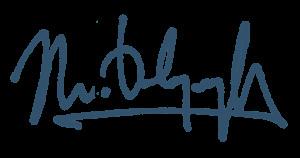
Administrator Missak Kawlakian missak@torontohye.ca
Advisor Harout Manougian harout@torontohye.ca
Advertisements ads@torontohye.ca
Branding Proper Company proper.am
CASSANDRA HEALTH CENTRE


Dr. Rupert Abdalian
Dr. Mari Marinosyan
Dr. Omayma Fouda

Dr. I. Manhas
Dr. Virgil Huang
Dr. M. Seifollahi
Dr. M. Teitelbaum
Hundreds converge on historic site to commemorate centennial anniversary of the Georgetown Boys’ arrival to Canada

cultural fabric of their adopted homeland. The event also provided an opportunity for attendees to hear the reflections of three descendants of the Georgetown Boys. Tom Toros Jackson, son of Missak Toumajian, who settled in Hamilton after leaving Georgetown, is now a longstanding Councillor of Ward 6 in his native city. Robert Adourian, son of Pavlos Paul Adourian and nephew of Onnig John Adourian, is an attorney at Devry Smith Frank LLP. Dr. Lorne Shirinian, a poet, writer, and filmmaker is a descendant of Mampre Shirinian, Mariam Mazmanian-Shirinian, and Ardashes Mazmanian. These personal accounts added depth to the legacy of the Georgetown Boys.
Descendants, dignitaries, and community organizations join in celebrating a historic humanitarian act and reflecting on the enduring legacy of the Georgetown Boys
Georgetown, Ontario—On Saturday, June 24, Armenian Canadians from Southern Ontario and members of the local Halton Hills community gathered at Cedarvale Park in Georgetown to commemorate the 100th anniversary of the arrival of the Georgetown Boys. The event, organized by the Sara Corning Centre for Genocide Education in partnership with Heritage Halton Hills and the Halton Hills Town Council, drew descendants of the Boys and various dignitaries from all levels of government.
A century ago, on July 1st, 1923, Georgetown welcomed a group of 50 Armenian orphans who had survived the Armenian Genocide. Over time, their numbers grew to 150, and they became known as the Georgetown Armenian Boys. Many descendants of the Georgetown Boys attended the anniversary celebration, honoring their ancestors’ remarkable journey.
Under a tent set up on the very field where the Boys lived and worked, more than 300 attendees gathered to pay tribute to this historic humanitarian act. Dignitaries present at the event included Her Excellency Ms. Anahit Harutunyan, Ambassador of the Republic of Armenia to Canada; Bryan May, Member of Parliament for Cambridge, Parliamentary Secretary to the Minister of National Defence, and co-chair of the CanadaArmenia Parliamentary Friendship Group; Michael Chong, Member of Parliament for WellingtonHalton Hills and Conservative Party of Canada Shadow Minister of Foreign Affairs; Aris Babikian, Member of Provincial Parliament for Scarborough-
Agincourt; and Acting Mayor of Halton Hills, Bob Inglis, among others. Religious and community leaders from the Armenian communities of Toronto and Mississauga, including Prelate Archbishop Papken Tcharian, and Revered Fathers Datev Mikayelian and Myron Sarkissian were present at the commemorative event.
These dignitaries acknowledged the Georgetown Boys’ significance as Canada’s Noble Experiment—a response to the Armenian Genocide that demonstrated compassion and provided a fresh start for the orphaned children. The Ottoman Empire’s genocidal campaign, which began in 1915, resulted in the deaths of 1.5 million Armenians and left half a million homeless.
“Here in Canada, news of the genocide was commonplace. Armenians wrote to each other, looking for relatives, hoping to rebuild their families. Non-Armenians opened the Globe, the Toronto Star, and other newspapers and read about the suffering of a far-away people,” read a part of the press release published by the Sara Corning Centre. Canadians were deeply moved by the news and responded with substantial donations, eventually raising $17 million in today’s currency.
Inspired by their empathy, a group of individuals initiated a project to bring child survivors of the genocide to Canada. With the approval of Prime Minister Mackenzie King and the Department of Immigration, a small quota was granted to this group. The Armenian Relief Association of Canada and the United Church of Canada provided care and supervision for the children raised at the Georgetown Armenian Boys’ Farm Home, now known as Cedarvale Park, throughout the 1920s. By the 1930s, the Boys had dispersed to farms across southern Ontario, contributing to the
Gabriella Batikian, the master of ceremonies and educational program coordinator at the Sara Corning Centre for Genocide Education, highlighted the Boys’ impact on Georgetown’s history and the broader Canadian narrative. The Boys had worked, played, and left their mark on the field where the event took place, just as the Mississaugas of the Credit First Nation had before them. For many attendees, Georgetown holds a special place in their family or communal history, while for historians, it signifies an important chapter in Canadian immigration policy and philanthropy.
The centennial anniversary event was made possible through the collaboration of various community organizations, spearheaded by the Sara Corning Centre for Genocide Education. Established in 2012, the Corning Centre aims to disseminate research on human rights and genocide to students. In addition to the anniversary celebration, the Centre has been conducting ongoing research and developing initiatives related to the Georgetown Boys. This fall, it plans to publish a volume of the Georgetown Boys’ newsletters, called Ararat, comprising 45 issues totaling over 700 pages filled with drawings, stories, and opinion pieces by the Boys and others. Looking ahead, the Centre aims to commemorate the centennial of the arrival of the first Georgetown Girls in 2026, offering insights into a different facet of Canadian history.
The anniversary celebration of the Georgetown Boys’ arrival served as a poignant reminder of Canada’s humanitarian spirit and the enduring legacy of those who sought refuge and made valuable contributions to their new home. The event brought together the Armenian Canadian community, local residents, and government representatives in a collective tribute to resilience, compassion, and the power of unity.
Hundreds converge on historic site to commemorate centennial anniversary of the Georgetown Boys’ arrival to Canada Photos by Ishkhan Ghazarian, courtesy of the Sara Corning Centre
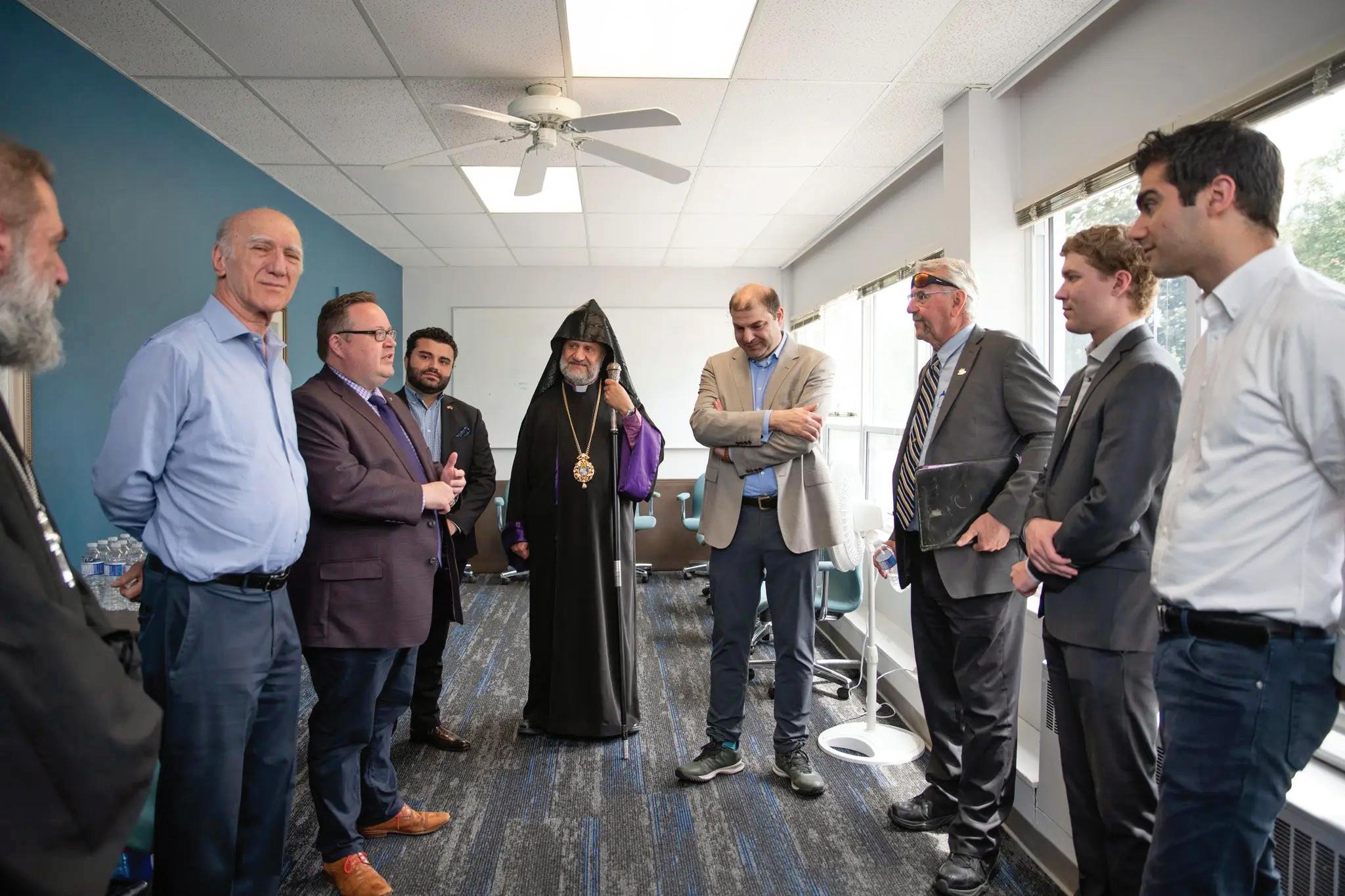
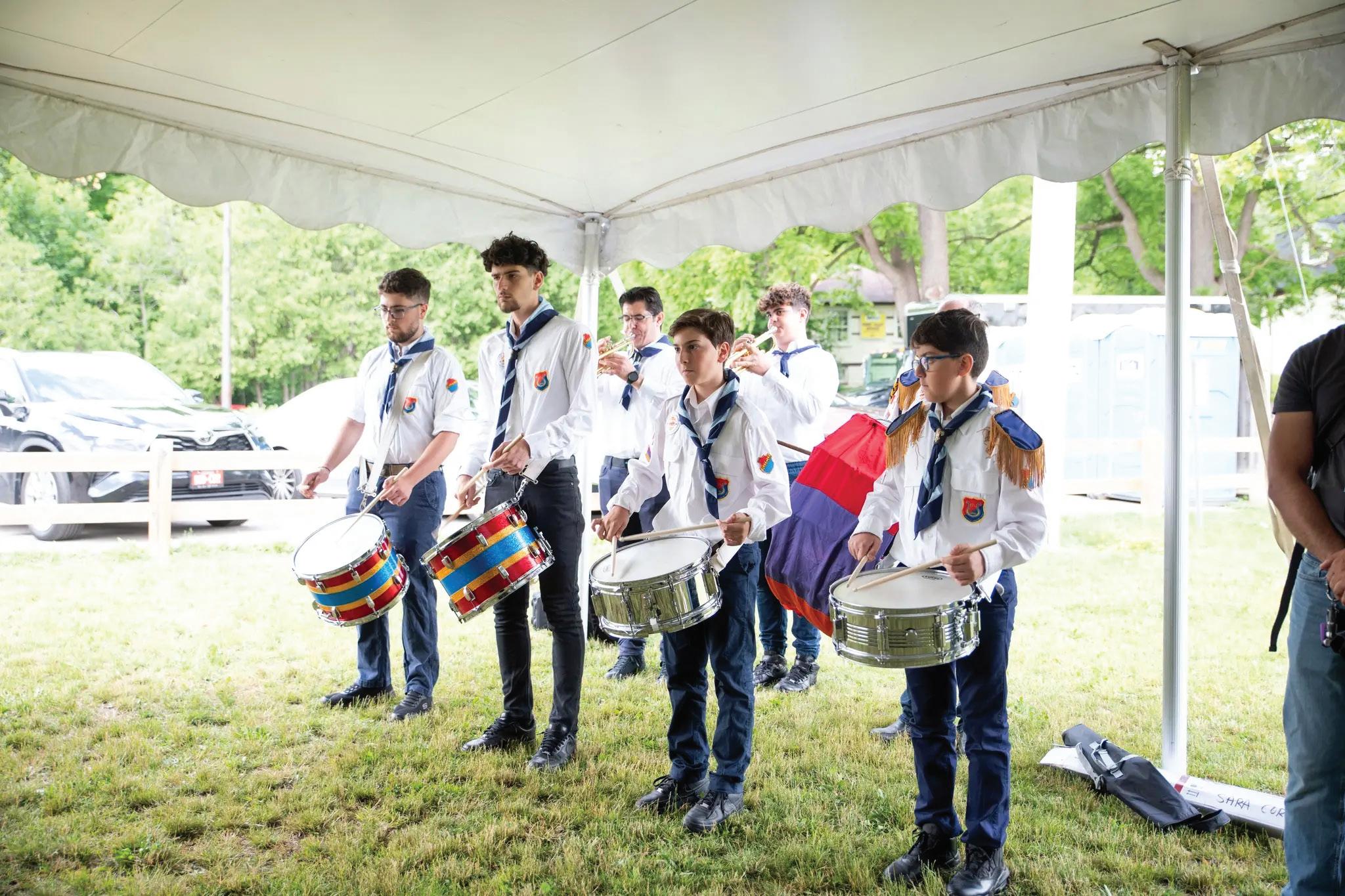
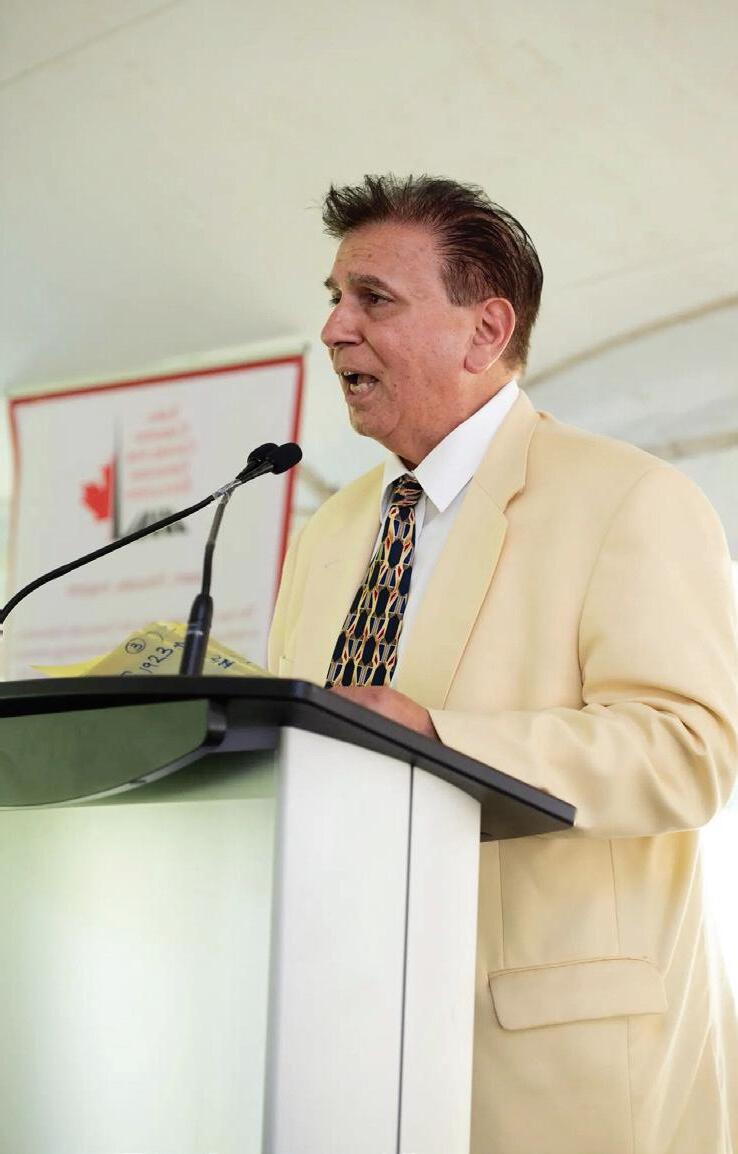
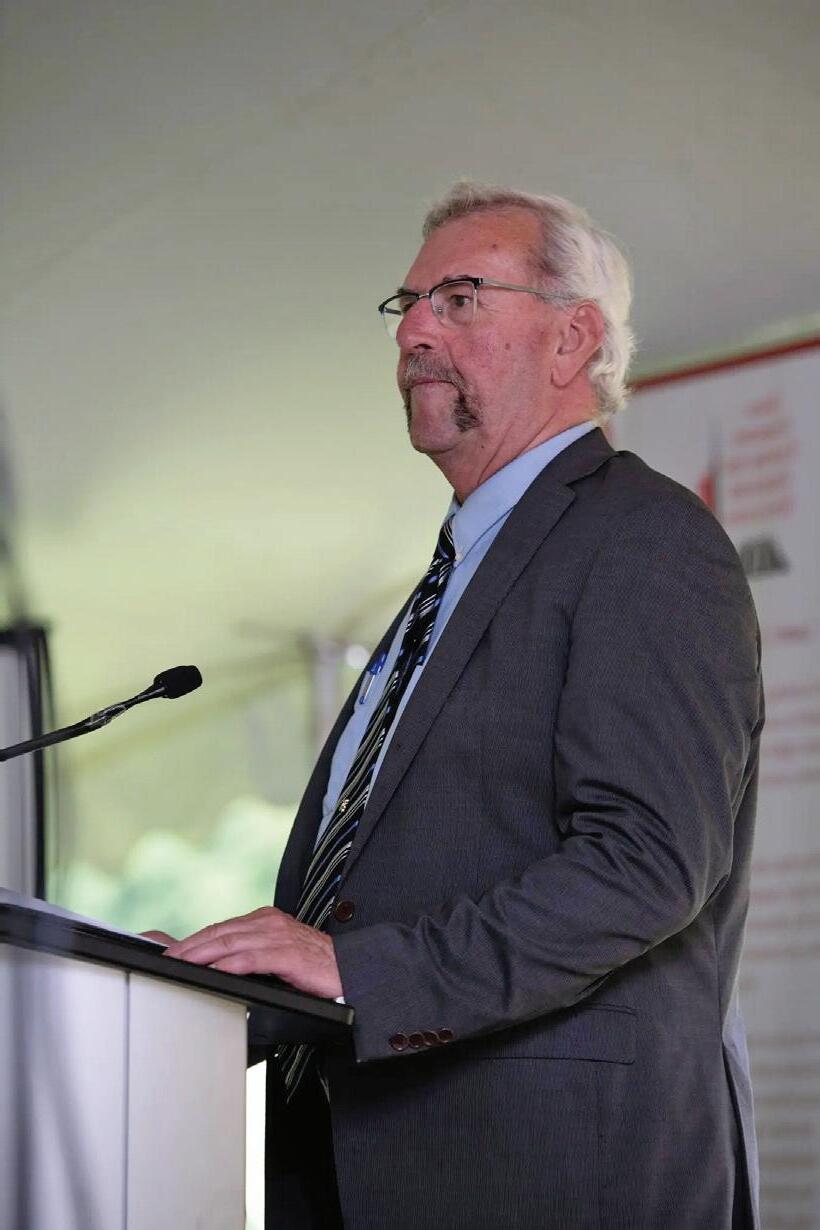
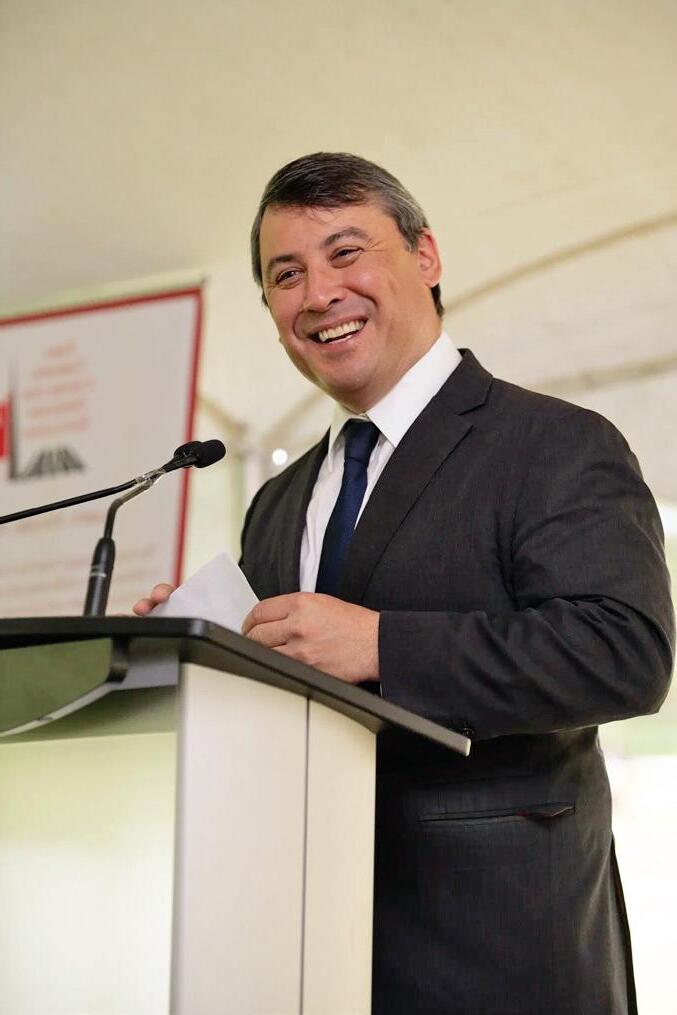









Who were the Gerogetown Girls?
Isabel Kaprielian-ChurchillShemlon. Jacobsen had been a missionary/nurse at the American Annie Tracy Riggs Memorial Hospital in Kharpert/Mezreh (currently Eliazig). After the Americans left in 1917, she ran their hospital and orphanage until the end of the war, when she returned to Denmark, exhausted. In 1922, she and her friend Karen Marie Petersen, the former director of the Emmaus Danish orphanage in Mezreh returned to the Middle East and set up an orphanage, mostly for girls.
Both Frearson and Jacobsen ran strict operations. Girls were taught godliness, cleanliness, orderliness, and hard work. Long before World War I and the Genocide, the movement to educate Armenian girls had taken root in the Ottoman Empire. In the post-war period, the orphanages, numbering in the hundreds, had revitalized this movement. Emphasis was placed on educating the children to speak, read, and write their mother tongue, for they had come from many different backgrounds. Some had been gathered off the streets and had little or no schooling. Others had been rescued from Turkish, Kurdish, or Arab homes or from Turkish orphanages where they had been forced to speak those languages and punished for speaking Armenian.
Education did not rule out marriage and family formation, which remained the traditional role for Armenian girls. Homemaking was all the more crucial after the Genocide to rebuild the Armenian nation. Towards this goal, girls in the orphanages were taught cooking, laundering, gardening, and childcare. On the other hand, demographic realities necessitated training girls to be self-supporting, so girls were taught the needle arts, including dressmaking, embroidery, lacemaking, and rug weaving. A small number were directed into teaching, nursing, or midwifery. The entire approach to educating and training girls shows their increased value to the ethnocultural survival of the Armenian people.
Sponsorship and immigration
Both the ARAC and the UCC applied to the Canadian government to sponsor Armenian girls and arrange for them to work in domestic service. Sponsorship was usually arranged jointly between the ARAC/UCC and a relative, a friend, or a Canadian organization that paid for travel costs. As the chief negotiator with the government, Rev. Ira Pierce, general secretary of the ARAC and later affiliated with the UCC, notes an increase in “urgent appeals from high-class Armenian girls” wishing to come to Canada for domestic employment.
At the same time, because there was a great need for and a shortage of domestic servants in Canada, the Armenian girls were given consideration by Immigration Department officials since, as a rule, Armenians, classified racially as Asians, were undesirable and unwelcome in Canada. Armenians were even more undesirable as refugees, for it was feared they would be a drain on the public purse.

Typically, the Canadian government set out guidelines for the girls:
In view of the success of the previous movement, … the Minister [of Immigration and Colonization] has agreed to the admission of fifteen additional Armenian girls, conditional on the following:
1. That these girls shall be able … to produce valid passports and, of course pass medical inspection.
2. That there shall not be included in the group any girl who has first or seconddegree relatives in the United States and no relatives in Canada.
Many of the 38 girls and young women who were sponsored to Canada by the Armenian Relief Association of Canada (ARAC) and the United Church of Canada (UCC) came from two orphanages: Miss Martha Frearson’s orphanage in Mt. Shemlon and Miss Maria Jacobsen’s orphanage in Sidon/Jibel, affectionately known as The Bird’s Nest Orphanage, both in present-day Lebanon. Frearson, a British woman, and Jacobsen, a Dane, had had a long association with Armenians. Frearson had run an orphanage for girls in Aintab. When conditions became dangerous, she evacuated her charges, under the protection of the French and British, to Mt.
3. That we will not admit the relative of any Armenian boy or girl who was admitted to Canada conditional on taking farm work or domestic service and has not observed the condition of his or her own entry. On the other hand, every consideration will be given to the inclusion of relatives of boys or girls who came in for farm work or domestic service and have remained in one or other of these occupations.
4. That the girls or young women to be admitted will be placed in domestic employment in Canada by your Board and given the usual aftercare, and also the placement reported to the Department.
5. That none of the above-named are leaving behind other members of their families whose admission to Canada will be applied for later and that no person shall be included who has any intention of proceeding after to join relatives or friends in the United States.
Who were the ... ← 15
Government authorities were clearly worried that newcomers might have relatives abroad and might apply in the future to bring them to Canada. Authorities were also on the lookout for immigrants using Canada as a backdoor to the United States.
The girls
When, in 1926, fifteen-year-old Kohar Bedrosian learned Canada had accepted her, her joy was boundless. She knew nothing about Canada or what a domestic was or did, but she was excited to venture forth. Kohar confides: “When I put my foot on Canadian land, when I saw that pure white snow, I fell in love. I loved it then, and I still love it!” (from an oral interview of Kohar Bedrosian Kasparian by Isabel Kaprielian-Churchill, Toronto, 1988).
Like most of the girls, Kohar did not spend time at the Georgetown farm/home. Ordinarily, the younger girls attended school while the older ones were placed in domestic service in southern Ontario. Rev. Pierce had no problem finding work for them in refined and respectable homes, usually in Toronto and often on a two-year contract basis. The Armenian girls were never a drain on the public purse. They were never short of work and were in constant demand because of their diligence, honesty, modesty, and pleasant behaviour.
Kohar describes her first job as a mother’s helper for a family with a seven-year-old boy and a thirteen-year-old girl. She had her own well-furnished room, ate “whatever they ate,” and never went hungry.
I got up at seven, dressed in my black and white uniform, and did the chores. She did the laundry and cooking, I cleaned, waxed and dusted, set the table and did the dishes. After lunch, I had a bath and put on my white and yellow uniform. I hated wearing the cap, which made me feel like a slave. So she said it was okay not to wear it. I had a couple of hours break in the afternoons; I read or crocheted. Then I helped her prepare dinner. At first I was a little nervous with the vacuum cleaner, but after I learned the buttons, it was fine. But I never did the wash. I was afraid of the wringer. By 7:30, the work was done and I spent my evenings reading or doing crochet. Basically, I did whatever I was told. … I just watched and copied them to learn Canadian ways. Whatever they did, I did. I saved my $3.00 a week salary. They were very kind people and I stayed with them for fifteen months.
Pierce placed her in another home:
I was lucky; my second family was even more cultured than the first. I am still friends with them. During the three years that I worked for them I was very happy. She was motherly, never treated me like a maid, but like a daughter. Paid me $40 a month - of course I was more experienced by this time, and I could cook rather well. They taught me about Canada and Canadian customs, took me to concerts and plays.
Not every girl was as fortunate as Kohar, but most fulfilled their contracts. Through contact with their Canadian employers, the girls improved their English language skills, learned about Canada and Canadian ways, and managed to adjust relatively smoothly to Canadian society. A simple event is symbolic. Following the example of some of her friends and of Canadian girls, Kohar took the risqué step one day of wearing lipstick. Her mistress took her aside and explained that she did not need lipstick to enhance her looks. Besides, cautioned her mistress, “nice” girls did not wear lipstick.
While the girls were adjusting to Canada, they were providing an essential service to Canadian families. Mrs. Dingman of Toronto wrote to Pierce that her maid was “a splendid girl in every way.” She was pleased to report that the young Armenian girl’s “happy disposition and dependable qualities of character make her a desirable companion” for her children. “Not only does she conduct herself like a lady,” wrote Mrs. Dingman, “but she cooks good meals and takes an intelligent interest in the family’s welfare.” Such praise for the Armenian domestic servants was common.
The future
The relationship between the girls and the Georgetown boys remained intimate. Some were sisters of the boys, and some married Georgetown boys, thus strengthening and deepening the bonds of Armenian-Canadian community life.
Eventually, all the girls married, some to Armenian-Canadians, others to
Armenian-Americans, and started new families. Reproduction as rebuilding was embedded in the spirit and sensibilities of survivors of the Armenian Genocide. Orphan girls like those in Canada and elsewhere around the globe became the mothers of the survivor Armenian nation.
The child of Armenian Genocide survivors, renowned Canadian scholar Isabel Kaprielian-Churchill has dedicated much of her professional life to researching and chronicling Armenian immigration and culture of the Diaspora. She is the author of countless monographs, articles and books, including the 2012 Sisters of Mercy and Survival: Armenian Nurses, 1900-1930, which was granted the Richard and Tina Carolan Literary Award. Her forthcoming book is entitled The Georgetown Children: Genocide, Orphans, and Canadian Humanitarians.
Scan to watch ‘The Georgetown Boys: Armenian Orphans in Canada’ by Isabel Kaprielian-Churchill (1987)
OUR CURRENT PROJECTS
• Medical Centre at Ljap/Kegharkunik
Լճափ, Գեղարքունիք
• Medical Centre at Shinuhayr/Syunik
Շինուհայր, Սիւնիք

• Medical Centre at Baravakar/Tavush
Տաւուշ
• Playground at Vartenis/Kegharkunik
Վարդենիս, Գեղարքունիք
Քեպէգ, Մոնթրէալի անմիջապէս հարաւը), ուր Գրական ուսմանց բաժանմունքին տնօրէնն էի, աշխատանքի անցայ Քինկսթընի Գանատայի արքայական զինուորական քոլեճին մէջ։ 1999-ին դարձայ Անգլերէնի բաժանմունքի ղեկավարը։ Քինկսթընի Արքայական զինուորական քոլեճին մէջ ծանօթացայ Ալան Ուայթհորնին, որ Քաղաքագիտութեան բաժանմունքին մէջ կ՚աշխատէր։ Ան ներկայ եղած էր Քուինզ համալսարանին մէջ իմ տուած դասախօսութեանս եւ մեր առաջին հանդիպումին եկաւ գրասենեակս։ Անհամբեր էր ինծի ըսելու, որ մօրը կողմէն կէս հայ էր։ Սկիզբ առաւ երկարատեւ եւ արգասաբեր մեր ընկերութիւնը, որ այսօր ալ կը շարունակուի։ Մենք համահեղինակ եղանք գիրքի մը՝ «Հայոց ցեղասպանութիւն. դիմադրելով անտարբերութեան անգործութեանը», («The Armenian Genocide: Resisting the Inertia of Indifference»), բայց, եւ ասիկա աւելի կարեւոր է, քանի-քանի օրեր անցուցինք Օթթաուա՝ այցելելով Խորհրդարանի եւ Ծերակոյտի անդամներու, անոնց պատմելով Ճորճթաունի հայորդիներուն եւ հայուհիներուն մասին եւ խօսելով Հայոց ցեղասպանութիւնը ճանչնալու կարեւորութեան մասին[6]: Մենք պարզապէս երկու հոգին էինք բազմամարդ եւ յարատեւ նախաձեռնութեան մը։ Եւ արդիւնքը 2004-ին 153 թեր եւ 68 դէմ քուէներով ընդունուած Պիլ-Մ-380 (Bill M-380) բանաձեւն էր, որ հռչակեց թէ «այս Խորհրդարանը կը ճանչնար 1915-ի Հայոց ցեղասպանութիւնը
եւ զայն կը դատապարտէր՝ որպէս ոճիր ընդդէմ
մարդկութեան»։ Հակառակ ասոր, մենք տակաւին պէտք է պայքարինք Ցեղասպանութիւնը ժխտող կատաղի արշաւի մը դէմ։ Պէտք է արձանագրեմ, որ եղբայրս՝ Ճորճը, նոյնպէս շատ գործունեայ
է Ցեղասպանութեան ուրացման դէմ
մէջ։ Ճորճը գրադարանավարագիտութեան մագիստրոսի աստիճան ունի եւ
տարիներով Զօրեան հիմնարկի գործադիր տնօրէնը եղած է։ 2010-ին Պատուոյ պրոֆեսոր կոչումով հանգստեան կոչուեցայ Արքայական զինուորական քոլեճէն։ Ատկէ ետք տարիները անցուցած եմ ամենասիրած բաներս ընելով՝ գրելով եւ հրատարակելով բանաստեղծութիւններ, թատերախաղեր, պատմուածքներ եւ վէպեր, որոնք գրեթէ բոլորն ալ Ցեղասպանութեան հետ աղերս ունեցող հայկական նիւթերով են[7]: Հպարտ եմ ծնողներովս, Գանատայի մէջ անոնց ստեղծած կեանքով եւ ինծի իրենց աւանդածով։ Խանդաղատանքով կը յիշեմ Թորոնթոյի Տոն Վելի փողոցի մեր տան ետնաբակին մէջ եղած բազմաթիւ հաւաքոյթները, երբ Ճորճթաունի հայորդիներն ու հայուհիները յաճախ կը հաւաքուէին։ Մտիկ ըրած եմ իրենց պատմութիւնները եւ մինչեւ այսօր ապշած կը մնամ ի տես այն կենսունակութեան եւ վարակիչ երջանկութեան, որուն ականատեսը եղած եմ։ Իրենց գոյատեւումը եւ ճորճթաունեան իրենց փորձառութիւնը այս մարդոց տուած է հայ մնալով հանդերձ իրենց նոր երկիրին մէջ ծաղկելու եւ բարգաւաճելու առիթ մը։ Այնքան պարտական եմ ծնողքիս եւ մօրեղբօրս։ Տարիներու ընթացքին ես դարձայ մեր ընտանեկան պատումներուն հեղինակը։ Ուրախ եմ պատուելու զիրենք այս ակնարկին մէջ եւ իրենց կեանքերուն մէկ մասին բաժնեկից դարձնելու այլոց։
Լոռն Շիրինեանը ծնած է 1945-ին, Թորոնթօ։ Ճորճթաունի հայորդիի մը եւ Ճորճթաունի հայուհիի մը զաւակն է, եւ 1960-էն ի վեր իր խոհումներուն առարկան եղած է Գանատայի մէջ հայ ըլլալու խնդիրը։ Շիրինեանը Գանատայի արքայական զինուորական քոլեճէն ներս անգլերէնի եւ համեմատական գրականութեան պատուոյ պրոֆեսոր է։
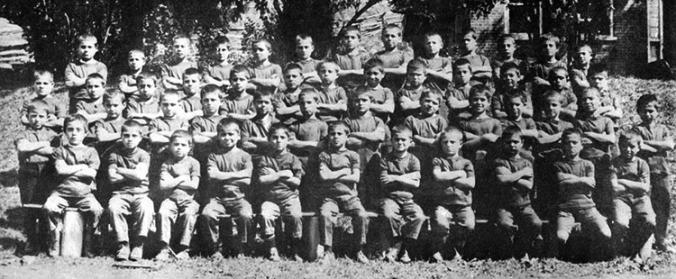
[1] Յակոբ Աբրահամեանը «Multicultural History Society of Ontario»-ին համար հօրս հետ հարցազրոյց
մը ըրաւ 8 օգոստոս 1979-ին. ես գրի առի զայն։ [2] Ծնողքիս կեանքի ճանապարհորդութեան եւ Ճորճթաունի իրենց օրերուն մասին
edited, revised, and with an introduction and added material by Lorne Shirinian, Toronto, Zoryan Institute, 2009։ Տե՛ս
«Orphans of the Armenian Genocide with Special Reference to the Georgetown Boys and Girls in Canada»
(«The Armenian Genocide Legacy», edited by Alexis Demirdjian, Houndmills, Palgrave Macmillan, 2016, էջ 44-66)։
[3] Lorne Shirinian, «Manuscript: Tom Sturgess», Toronto, Abbey Book Publishers, 1971։
[4] «Armenian-North American Poets: An Anthology», edited by Lorne Shirinian, Saint Jean, Manna Publishing, 1974։
[5] Lorne Shirinian, «Armenian-North American Literature: A Critical Introduction; Genocide, Diaspora and Symbols», Lewiston, Edwin Mellen Press, 1990։
[6] Lorne Shirinian and Alan Whitehorn, «The Armenian Genocide: Resisting the Inertia of Indifference», Kingston, Blue Heron
Յաւելեալ տեղեկութեան համար այն մասին, թէ ինչ կրնայ նշանակել
սերունդի հայ ըլլալը, տե՛ս Lorne Shirinian, «So Far from Home», in «Remembering Mass Violence: Oral History, New Media, and Performance», edited by Steven High, Edward Little, and Thi Ry Duong, Toronto, University of Toronto Press, 2014, էջ 49-59։
Looking toward 2026: A call to celebrate the (Georgetown) girls
As we reflect on the centennial anniversary of the arrival of the Georgetown Boys in Canada, it’s essential to shed light on a lesser-known yet equally significant chapter— the story of the Georgetown Girls. History has often focused on the Boys’ journey. Still, it’s time to recognize the strength and resilience of the girls and women who survived the Armenian Genocide and started a new life in Canada.
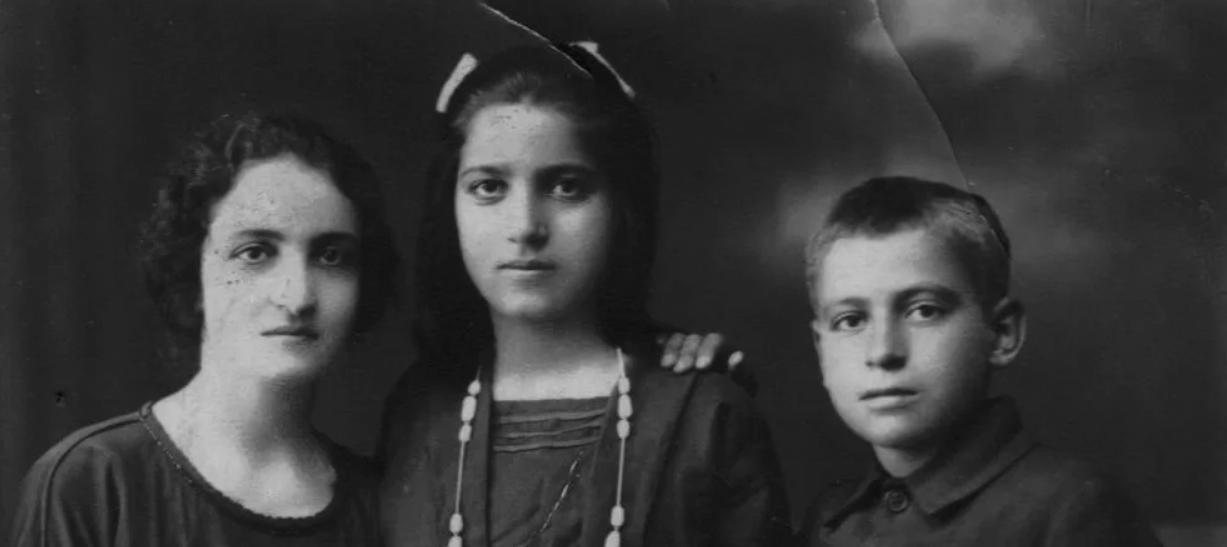
The arrival of the Georgetown Boys served as a beacon of hope, showcasing Canada’s compassion and humanity. However, as we commemorate their journey, we must not forget that there were girls and women who also embarked on survival, hope, and transformation. Known as the Georgetown Girls, these 40 individuals had a journey parallel to the Boys’.
While their tales have largely remained untold, often overshadowed by the Boys’ accounts, there are important sources and works that shed light on the Georgetown Girls’ journey and contribute to a more comprehensive understanding of their experiences. Notable among these sources is “Refugee Women as Domestics: A Documentary Account” by Isabel Kaprielian-Churchill, published in the journal Canadian Woman Studies (Vol. 10, No. 1).

Additionally, Mansoor Tanwee’s “Georgetown Girls: A Mystery in History,” published in Halton Hills Today earlier this year, and George Aghjayan’s “The Georgetown Girls: Reconstructing a Family History,” featured in The Armenian Weekly April 2013 Magazine, offer a personal and heartfelt account.
The Georgetown Girls, ranging from five to 38 years old, arrived in Canada between 1926 and 1930, just a few years after the boys. Tracing their stories has been difficult due to the lack of historical documentation, but their presence and contributions to the Georgetown community were undeniable. The Girls carried the scars of their past but also the hope for a brighter future. Some were sisters or mothers of the boys who had arrived before them, and some married the boys after arriving, highlighting
the connections that bound this community together. Yet, despite their significant role, the Girls’ stories have often been relegated. It’s time to rectify this oversight and ensure that their journeys are celebrated.
As we commemorate the 100th anniversary of the Georgetown Boys’ arrival, let’s look forward to another milestone—the centennial of the Georgetown Girls’ arrival in 2026. This upcoming anniversary presents an opportunity to correct the historical imbalance, unearth hidden stories, and pay tribute to the resilience and strength of these women.

We call upon historians, researchers, community organizations, and community members to join forces in uncovering the stories of the Georgetown Girls. By amplifying their voices and experiences, we can provide a more comprehensive narrative of the Armenian Genocide’s aftermath and its impact on the lives of survivors. Just as the Boys’ stories have touched our hearts, the Girls’ stories deserve to be heard, acknowledged, and remembered.
Torontohyeիր տիկնոջ՝ տիկին Էլիզին, իր զաւակներուն, հարազատներուն եւ համայն թորոնթոհայութեան: Մեր յառաջիկայ թիւին մէկ մասը պիտի նուիրուի Մարգար Շարապխանեանի անթառամ յիշատակին:
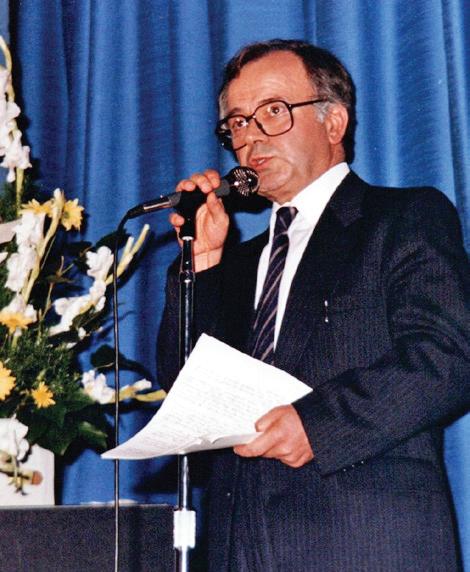

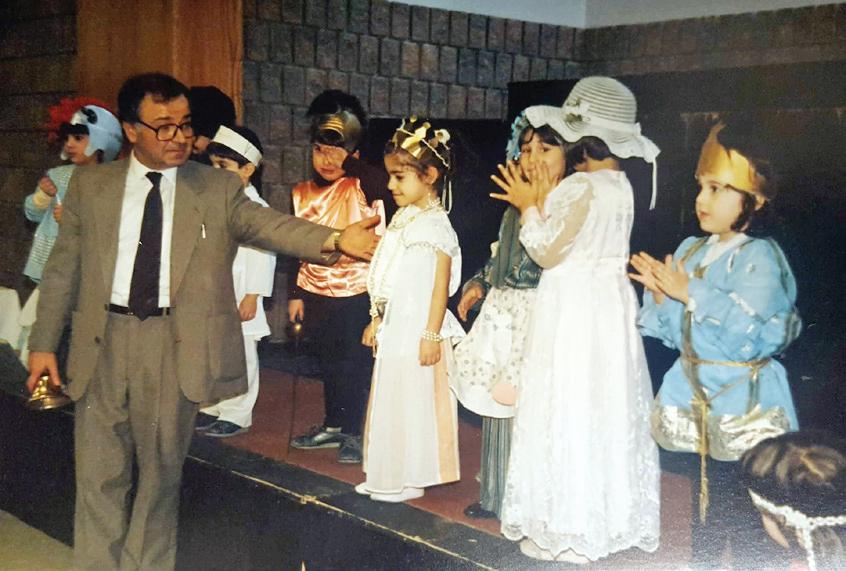



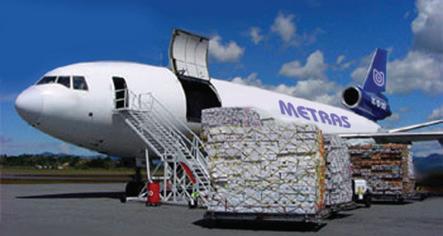



Խաչ-բառ Crossword

Հորիզոնական
2. (գոյական) ապրելու աշխատանք, գործ, զբաղում
4. (յատուկ անուն) Քամի __________. այս բացառիկ
թիւին կողքի արուեստի գործին հեղինակը
6. (գոյ.) ամիսը անգամ մը հրատարակուող թերթ
8. (գոյ.) անգլիական կամ ամերիկեան լեզու
9. (յատ. անուն) Ուիլիըմ Լայն Մաքենզի ____.
Գանատայի 10-րդ վարչապետը
13. (գոյ.) հօրէ կամ մօրէ զուրկ մանուկ, ծնողազուրկ
14. (բայ) մահէ ազատիլ, կրկին ապրիլ
15. (ածական) «Գանատայի _________ ընկերութիւն» (ԳՀԸ). կազմակերպութիւններէն մին, որ Գանատայի
կառավարութենէն արտօնութիւն ապահոված էր 110
մանչ բերելու հարաւային Օնթարիօ
17. (ած.) «Էջեր _________ պատմութենէն. «Արարատ»
ամսաթերթերը (1926–1929)» հատորը, որ շուտով
լոյս պիտի տեսնէ
18. (գոյ.) ձաւարով կամ բրինձով կերակուր (փիլաւ)
19. ամբողջովին կործանել, անճիտել
21. (գոյ.) կենդանութիւն, ողջութիւն, ապրում
23. (գոյ.) հայերէն խօսող
Ուղղահայեաց
1. (գոյ.) ցեղի մը բնաջնջում
3. (յատ. անուն)հարիւր տարի առաջ
խումբ մը հայ որբեր ժամանեցին
_________, Օնթարիօ
5. (յատ. անուն)Ճորճթաունի հայ տղոց
ամսաթերթը
7. (գոյ.) սնունդ, ուտելիք
10. (գոյ.) հարիւրերորդ տարեդարձ, դարադարձ 11. (բայ) ազատիլ, պրծիլ 12. (յատ. անուն) Հրատ
«Georgetown Boys Stories: By Their Sons and Daughters»
16. (յատ. անուն)
20. (գոյ.)
պատասխանները
Խմբագրութեան կողմէ
«Թորոնթոհայ»-ը պատասխանատու չէ իր էջերուն
մէջ լոյս տեսած ծանուցումներու բովանդակութեան: Հրատարակութեան մէջի ներկայացուած
կարծիքներն ու տեսակէտները հեղինակներունն
են. «Թորոնթոհայ»-ի խմբագրութիւնը անպայման
չի բաժներ զանոնք: Հրատարակութեան մասնակի
կամ ամբողջական վերարտադրութիւնը առանց
հրատարակիչին կամ խմբագիրին գրաւոր
արտօնութեան արգիլուած է: Մեզի յղուած բոլոր
թղթակցութիւններն ու այլ գրութիւնները ենթակայ են
From the editor
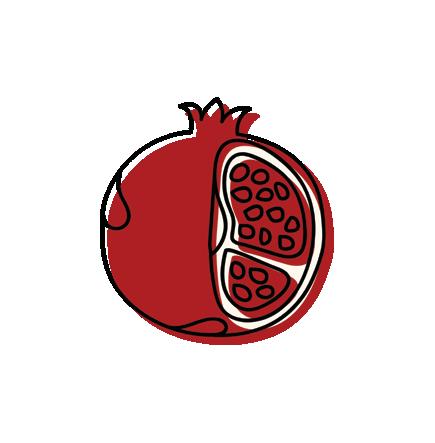
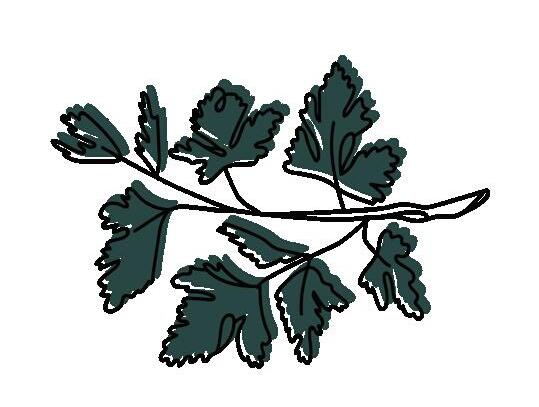
Torontohye does not necessarily endorse or evaluate the products, services, or companies advertised. The opinions expressed in this publication are those of the authors. They do not purport to reflect the opinions or views of Torontohye. The reproduction of the material contained in this publication may be made only with the written permission of the publisher or editor. All submissions are subject to editing for space, style, and clarity.
Armen’s math corner
Junior Problem:
Mama Bedoukian was famous for her tasty bulgur pilaf that the Georgetown Boys loved. Once, two boys named Kourken and Hagop got to the pilaf before anyone else and ate the whole pot! The proportion of pilaf eaten by Kourken to that eaten by Hagop was 3:1. What percent of the pilaf did Hagop eat?
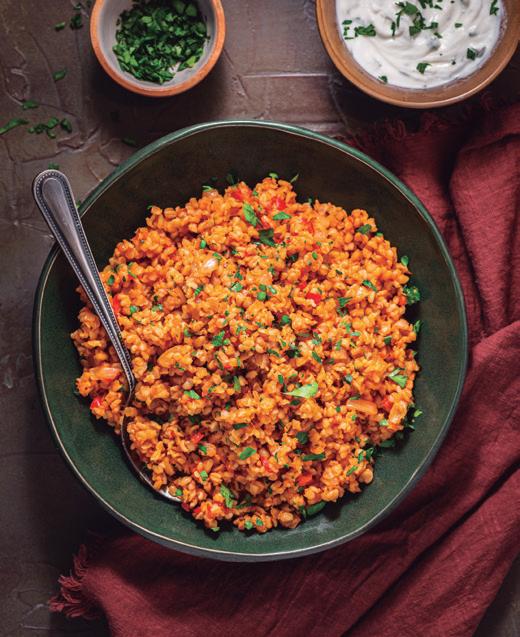
Senior problem:
Raffi wants to go from Peterborough to Cedarvale Park, the site of the Georgetown Boys' farmhouse. He starts at Trent University after filling up his car's gas tank. After driving 105 km, he used 3/8 of the gas. If he keeps using gas at this rate, about how much more can he drive before he runs out of gas completely?
տղոց աւերածութիւնները: Անոնց «Տղա՜քս» կը կոչեր…
«Մենք բոլորս զայն կը սիրէինք. կը համբուրէինք, կը գրկէինք, կարծես մեր իսկական մայրն ըլլար: Երբ ան եկաւ, բոլորս այնքա՜ն ուրախացանք, որ հայ կին մը եկած էր մեզի խնամելու։ Ան մեզի հանդէպ սէր ցոյց տուաւ։ Թերեւս առաջին բանը, որ իրմէ ուզեցինք, հայկական ճաշն էր։ Բոլորս կու լայինք փիլաւի (եղինձ) համար. «Մեզի համար փիլա՜ւ եփեցէք, հաճիս, փիլա՜ւ եփեցէ՛ք» կը պաղատէինք, գրեթէ ամէն օր: Օր մըն ալ ան քիչ մը պլղուր (ձաւար) ճարեց եւ փիլաւը պատրաստեց: Այն կերակուր էր ոչ միայն մեր ստամոքսներուն համար, այլեւ մեր հոգիներուն համար…» Եղինձը կամ փիլաւը ճաշատեսակ մըն է, որ կը պատրաստուի, երբ ջուրը կը լեցնեն հացահատիկի (սովորաբար՝ բրինձի, գարիի կամ ցորենի) վրայ և կ’եփեն այնքան, մինչև ամբողջ ջուրը քաշուի։ Մինչ այս ճաշատեսակները այսօր կը մատուցուին նախապէս՝ մէկ այլ կերակուր լրացնելու համար, անոնք առաջ կը պատրաստուէին
տեսակին, պարունակուող բաղադրիչներուն և նոյնիսկ մտադրութեան (կծու՝ ախորժակ բանալու համար, կամ՝ քաղցր): Թէեւ անոնք այնքան տարածուած են, որ հայկական ընտանիքներու մեծամասնութիւնը կրնայ պարծենալ, որ անոնք հարիւրաւոր (եթէ ոչ հազար) անգամ պատրաստած են։ Իսկ երբ ականատես կ’ըլլաս իրարանցումի, երբ եղինձը այրուի կամ ուշանայ սեղանէն, կը հասկնաս, թէ որքան կարեւոր եւ անբաժանելի է հայկական նման կերակուրները ճաշելու համար: Քանի որ անոնք յաճախ կ’առաջարկուին այս խոհարարական գիրքին մէջ՝ որպէս այլ ճաշի հետ, ես ներառած եմ չորս տարբերակներ, որոնք հետաքրքիր կը դարձնեն որեւէ ապուր կամ շոգեխաշած ճաշ (stew) (եւ նոյնիսկ հիմնական) վերածելով կերակուրը ամբողջական, սիրելի եւ համեղ: Բաղադրութիւնը
• 1 գաւաթ մեծ ճերմակ ձաւար (պլղուր)
• 2 գաւաթ տաք ջուր
• 1 գաւաթ մանրուած լոլիկ (1 մեծ լոլիկէ)
• 1-2 պզտիկ պղպեղ (մանր մանրուած)
• 1 պզտիկ սոխ՝ մանր մանրուած
• ¼ գաւաթ ձէթ
Ձաւարով եղինձ (Պլղուրով փիլաւ` 4-5 հոգիի համար) լուսանկարը՝ Սիրուն Բարսեղեանի
• Մեծ ծովու աղ՝ համեմելու համար Պատրաստութեան եղանակը Տապկել սոխը ձէթի մէջ միջին ջերմութեան վրայ մինչև կիսաթափանցիկ ըլլայ: Աւելցնել պղպեղը և եփել եւս մէկ վայրկեան։ Աւելցնել լոլիկը եւ եփել այնքան, մինչեւ լոլիկը ամբողջութեամբ եփի և փափկի։ Աւելցնել ձաւարը ու խառնել՝ թոյլ տալով, որ ան ներծծէ լոլիկին հեղուկը։ Աւելցնել 2 գաւաթ տաք ջուր եւ առնուազն 1/2 թէյի
փակել՝ ձգել, որ աւելորդ խոնավութիւնը քաշուի, մօտ 5 վայրկեան։ Մատուցելէն առաջ պատառաքաղով խառնել:
Sunday, October 8, 2023
Starting at 9:30am Armenian Community Centre of Toronto
